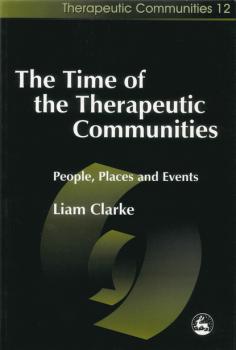ТОП просматриваемых книг сайта:
Community, Culture and Change
Скачать книги из серии Community, Culture and ChangeАннотация
Children and Adolescents in Trauma presents a variety of creative approaches to working with young people in residential children's homes, secure or psychiatric units, and special schools. The contributors describe a wide range of approaches, including art therapy and literature, and how creative methods are applied in cases of abuse, trauma, violence, self-harm and identity development. They discuss the impact of abuse and mistreatment upon the mental health of 'looked after' children, drawing links between psychoanalytic theory and practice and the study of literature and the arts. This indispensable book provides useful insights and a fresh perspective for anyone working with traumatised children and adolescents, including social workers, psychotherapists, arts therapists, psychiatrists, counsellors, psychologists and students in these fields.
Therapeutic Communities for Children and Young People - Группа авторов
Community, Culture and ChangeАннотация
Tackling the difficult issues facing those who work with traumatized and sometimes dangerous young people and their families, this new volume shows how professionals can bring about positive change and growth through the creation of «holding» and healing therapeutic environments. This collection of papers written by established and respected experts with extensive practice and research experience builds a powerful picture of the theory and practice of therapeutic community work with young people. A wide variety of therapeutic community approaches is considered alongside an analysis of the implications of this model for mainstream residential practice. Social work, health care and education professionals will find the text invaluable for its presentation of a well-founded analysis of their work with these most damaged and desperate children and young people.
Аннотация
Mental health services tend to view and treat mental health problems in an individual-centric way. This book argues for an alternative route to recovery that is cognizant of our social nature, needs and difficulties. Focusing on the therapeutic value of meeting others with similar experiences, it explores how mutual support can help ease the distress of mental health problems and foster emotional and psychological wellbeing. The author provides an overview of the theory, history and processes of mutual support, including how it can be understood from a developmental perspective and its importance in normalising and validating experiences and lessening feelings of isolation. She provides in-depth summaries of various approaches that harness mutual support including group therapy and therapeutic communities. Clear guidance is given on how to access, set up and facilitate mutual support groups, along with detailed information on services and organisations that utilise mutual support in the UK and beyond. This book will provide both mental health professionals and those experiencing mental health difficulties with essential information on mutual support, and the positive impact it can have on people's lives.
Информация о книге
Автор произведения Maddy Loat










